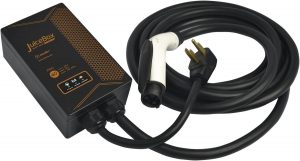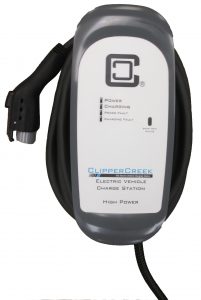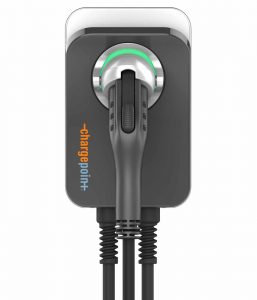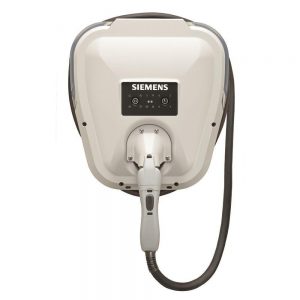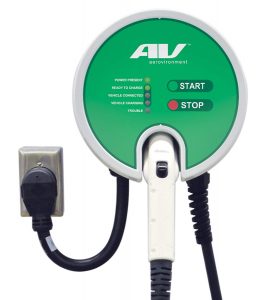ELECTRIC VEHICLE CHARGING STATIONS
Having the option of charging your electric car at home is crucial to ensuring that you’re fueled up and ready to go whenever you need it. There are three types of electric car charging stations. Each has their own installation process.
Here's what you need to know about charging
Electric cars all come with a 120-volt charging cable that can charge the battery from a household socket if there are no other options. But sooner or later, most battery-electric car owners will want a 240-volt Level 2 charging station that can recharge the car as much as four times faster. Owners of plug-in hybrids with ranges below 30 miles may find the standard charging cable fine, but as plug-in ranges rise, they too may decide a charging station will increase their all-electric driving. While 240-volt charging stations aren’t complicated, there are many different options on the market.
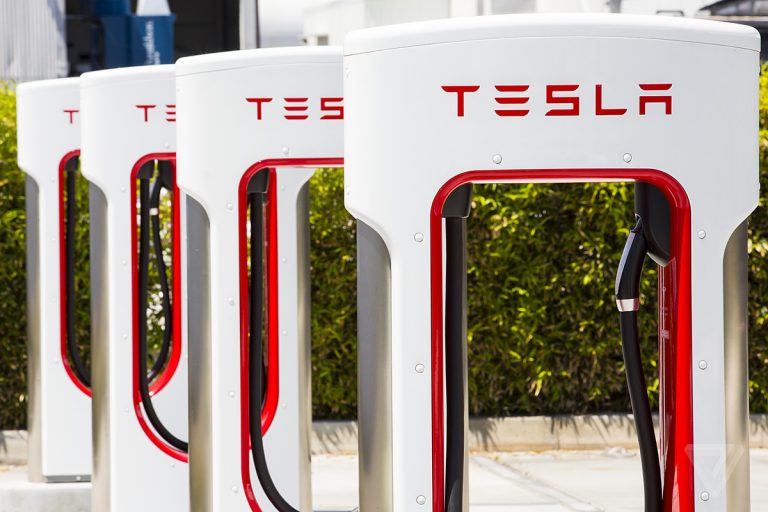
Popular Choices for EVSEs
It may surprise EV newbies to learn that an electric car’s charger is found on board the vehicle. The charger is not the thing on the wall, but rather the equipment buried in the guts of the car that takes an AC source of juice from your house, and converts it to DC—so your car’s battery pack can be charged.
This fact doesn’t stop nearly everybody from calling the wall-mounted box that supplies 240 volts of electricity a “charger.” That box, cord, and plug have a technical name—Electric Vehicle Service Equipment or EVSE—and if you have an EV, you’re going to want to install one at home.
So, it’s slightly misleading to say we’re providing guidance about chargers because we’re really talking about buying an EVSE—which is essentially no more than an electrical device allowing drivers to safely connect an electric car to a 240-volt source of electricity. It’s not rocket science, and you should not overthink the selection and installation of an EVSE.
JuiceBox Pro 40
It delivers up to 40-amps of power, while the main competition is limited to 30 or 32-amps. If you don’t want the extra power, the JuiceBox Pro 32 is available for about $80 less and has all the features of the Pro 40. It comes standard as a plug-in unit, it has a NEMA-4 rated outer case for extra protection from the weather, a 24-ft cable is standard, and it’s WiFi-connected with an app that has the most smart-charging features available. You can de-rate the power delivery, set reminders and notifications, and even use Amazon Alexa voice control.
The JuiceBox is also the only EVSE on the list that allows load-sharing, which allows the owner to use one dedicated circuit for multiple units. This can be very useful for two-EV families. Basically, it checks all the boxes. Also, the JuiceBox along with the ChargePoint Home are the only Energy-Star certified units on the list.
ClipperCreek HCS-40P
ClipperCreek has been making EV charging equipment longer than any of other company, and has built a reputation for making extremely durable, reliable charging stations. The HCS-40 is a “dumb” charger and is available hardwired or as a plug-in unit. The HSC-40 can deliver up to 32-amps, and comes standard with a long 25-ft cable. The outer casing is NEMA-4 rated for extreme weather and like the JuiceBox, it comes with a remote connector holster which allows the owner to locate it wherever they choose. Many owners like this option, so they can locate the holster on the wall directly opposite their charge port, even though the charger may be further away.
The HCS-40P is physically the largest unit on the list, which may be a consideration if you have limited wall space. ClipperCreek’s reputation for high-quality & durable units is well earned, and they have a very loyal customer base.
ChargePoint Home 25
ChargePoint manages the largest network of public charging stations in the US. They entered the residential charging stations market in 2015 with the introduction of the ChargePoint Home. The Home is a WiFi-connected smart charger and offers real-time charging data, the electricity cost of each session, as well as previous charging history. It is available as a plug-in, as well as hard-wired unit. Like the JuiceBox, you can sync the Home with Amazon Alexa to remotely start, schedule and stop charging sessions and it’s also Energy-Star certified. The ChargePoint Home delivers up to 32-amps, and has a NEMA-3 outer enclosure, that is suitable for outdoor use but offers a little less protection from the elements than some other units that are NEMA-4 rated. There’s a built-in connector holster with a nice LED light to help center the connector when holstering it.
The ChargePoint Home is the smallest and lightest unit, with a very sleek design and pivoting connector holster in the center of the body.
Siemens VersiCharge 30GRYU
It’s a basic, no-frills “dumb” charger that comes in a plug-in version as well as hardwired. Like the ChargePoint Home, it has a connector holster located on the center on the unit and is available in different cable lengths. It has a NEMA 4 rating for top weather protection. The standard cable length is a very short, 14-feet, so if you order the Siemens VersiCharge, make sure you order the cable length that you need. If you’re in the market for the most economical level 2 unit that’s safety certified, plugs in and has a NEMA 4 rating, then this might be your best choice.
AeroVironment EV Charger
AeroVironment had been making this popular charging station since 2010, and it has proven to be an extremely reliable unit. BMW, Ford, Nissan and others all chose AeroVironment at one time or another to be their official charging partner and used this unit. It is a “dumb” charging station and is available in hardwired or plug-in versions and delivers 32-amps. Like the ChargePoint Home, the outer casing is NEMA-3 rated, so it has a little less protection from the elements than the other three units on this list. This charging station was once a top choice, but it hasn’t upgraded or improved in eight years, so the competition has passed them. However, it’s still a solid choice if it fits your needs and budget.
Install an EV charging station
There are three types of electric car charging stations. Each has their own installation process.
Level 1 EV chargers come with your electric vehicle and don’t require any special installation – simply plug your Level 1 charger into a standard 120 volt wall outlet and you’re ready to go. This is the biggest appeal of a Level 1 charging system: you don’t have to deal with any extra costs associated with an installation, and you can set the entire charging system up without a professional.
A level 2 EV charger uses 240 volts of electricity. This has the benefit of offering faster charging time, but it requires a special installation procedure as a standard wall outlet only provides 120 volts. Appliances like electric dryers or ovens use 240 volts as well, and the installation process is very similar.
Level 2 EV charger: the specifics
Level 2 installation requires running 240 volts from your breaker panel to your charging location. A “double-pole” circuit breaker needs to be attached to two 120 volt buses at once to double the circuit voltage to 240 volts, using a 4-strand cable. From a wiring perspective, this involves attaching a ground wire to the ground bus bar, a common wire to the wire bus bar, and two hot wires to the double-pole breaker. You may have to replace your breaker box entirely to have a compatible interface, or you may be able to simply install a double-pole breaker in your existing panel. It is essential to make sure that you shut off all power going into your breaker box by shutting off all breakers, followed by shutting off your main breaker.
Once you have the correct circuit breaker attached to your home wiring, you can run your newly installed 4-strand cable to your charging location. This 4-strand cable needs to be properly insulated and secured to prevent from damage to your electrical systems, especially if it is being installed outdoors at any point. The last step is to mount your charging unit where you will be charging your vehicle, and attach it to the 240 volt cable. The charging unit acts as a safe holding location for the charge current, and doesn’t let electricity flow through until it senses that your charger is connected to your car’s charging port.
Considering the technical nature and risk of a Level 2 EV charger DIY installation, it is always smart to hire a professional electrician to install your charging station. Local building codes often require permits and inspections by a professional anyways, and making an error with an electrical installation can cause cause material damage to your home and electrical systems. Electric work is also a health hazard, and it is always safer to let an experienced professional handle electric work.
Level 3 charging stations, or DC Fast Chargers, are primarily used in commercial and industrial settings, as they are usually prohibitively expensive and require specialized and powerful equipment to operate. This means that DC Fast Chargers are not available for home installation.
Most Level 3 chargers will provide compatible vehicles with about 80 percent charge in 30 minutes, which makes them better suited for roadside charging stations. For Tesla Model S owners, the option of “supercharging” is available. Tesla’s Superchargers are capable of putting about 170 miles worth of range into the Model S in 30 minutes. An important note about level 3 chargers is that not all chargers are compatible with all vehicles. Make sure you understand which public charging stations can be used with your electric vehicle before relying on level 3 chargers for recharging on the road.
The cost for charging at a public EV charging station is also diverse. Depending on your provider, your charging rates may be highly variable. EV charging station fees can be structured as flat monthly fees, per-minute fees, or a combination of both. Research your local public charging plans to find one that fits your car and needs best.
Pairing your EV with rooftop solar is a great combined energy solution. Sun Energy Experts will even offer package purchase options involving a full EV charger installation with your solar installation. If you’re considering upgrading to an electric car sometime in the future, but want to go solar now, there are a few considerations that will make the process easier. For example, you can invest in microinverters for your PV system so that if your energy needs increase when you buy your EV, you can easily add extra panels after the initial install.

